You’d think an EKG would be simple, right? Heart test done, code it, bill it, move on.
But here’s the thing — it’s not that simple.
There isn’t just one EKG code floating around out there. Depending on what part of the process your team handles, there are different codes that tell different parts of the story.
Whether you just did the tracing, handled the interpretation, or both, what you bill and how you bill it can totally change what gets reimbursed and how fast.
We know. It sounds like splitting hairs. But at Cadence Collaborative, we’ve seen plenty of claims get denied over this exact detail.
This isn’t about memorizing random code numbers. It’s about knowing what each one means in real life, when you should use it, and how to keep your billing clean and stress-free, especially if you’re juggling multiple providers or navigating different payer rules.
Let’s break it down together.
So, What Is the EKG CPT Code, Really?
Let’s start with the basics. EKG stands for electrocardiogram. It’s that quick, non-invasive test that captures the heart’s electrical activity and helps spot things like arrhythmias or heart damage.
But here’s where people get tripped up. There’s not just one code for “EKG.” The most common CPT codes are:
93000 — EKG with both the tracing and the interpretation
93005 — EKG tracing only, no interpretation
93010 — EKG interpretation and report only, no tracing
These are often called global versus split codes. But honestly, what matters most is who did what, not just that the EKG happened.
When to Use 93000: The Global Code
Use 93000 when your practice performs both the EKG tracing and the formal interpretation with the report.
This is common in private practices or outpatient clinics where the physician orders, performs, and interprets the EKG all in one visit.
For example, a primary care provider sees a patient complaining of chest discomfort, runs an in-office EKG, interprets the results immediately, and documents the findings. That’s a textbook 93000.
Key point:
You can only bill 93000 if your provider did both parts of the service.
When to Use 93005: Tracing Only
Use 93005 if your clinic or staff only performs the EKG tracing, without providing the interpretation and report.
This often happens in multi-specialty practices, outpatient diagnostic centers, or situations where the test is run by clinical staff and then sent off for specialist review.
For example, your MA runs the EKG, but the tracing gets sent to a cardiologist elsewhere for interpretation. You’d bill 93005 for your part.
Key point: No interpretation, no report — just the technical component.
When to Use 93010: Interpretation Only
Use 93010 if your provider is only interpreting the EKG and generating the report, but did not perform the actual test.
This typically happens in cardiology practices where tracings from other providers, clinics, or even remote monitoring devices are sent over for expert interpretation.
For example, a family practice sends an EKG tracing to a cardiologist for review. The cardiologist analyzes it, writes a report, and bills 93010.
Key point: No technical work — just the professional interpretation and formal report.
Not Sure Which Code to Use? Here’s the Quick Rule:
- Did you do both? → 93000
- Did you only run the test? → 93005
- Did you only interpret it? → 93010
Always match your billing to the exact services provided. Guessing or defaulting to the global code “just in case” is a fast track to denials and revenue loss.
How Reimbursement Works for Each EKG CPT Code
Let’s be honest: at the end of the day, getting paid properly is what makes all the effort in coding and documentation worth it.
But EKG reimbursement isn’t just about sending out a claim and waiting for the check to clear. It’s about knowing how each specific code affects what you get paid and how fast.
Here’s how it really works in practice.
93000: The Global Code Comes With a Bigger Payment
When you bill 93000, you’re telling the payer that your practice handled both the technical and professional components of the EKG.
That means you took on the costs of running the test (equipment, staff time, supplies) and the responsibility of interpreting and reporting on it.
Because of that, payers reimburse more for 93000 than they do for the separate components.
But remember — more payment also means more risk. If the payer later determines you didn’t actually perform both parts, they can recoup the difference or flag your practice for audit.
93005: The Technical Component Gets Reimbursed Separately
When you bill 93005, you’re only billing for running the EKG — the technical side of the service.
Reimbursement here covers things like:
- Use of the EKG machine
- Clinical staff time
- Supplies (electrodes, etc.)
- Administrative overhead for the test
The payment is lower than the global code because you’re not billing for the professional expertise of interpreting the results.
93010: The Interpretation Is Valued for Clinical Expertise
When you bill 93010, you’re only getting reimbursed for your provider’s interpretation and report — no equipment, no staffing, just professional time and clinical judgment.
This is typically a modest payment, but it reflects the value of having a licensed provider analyze the EKG and provide actionable insights for patient care.
Billing this without proper documentation, or billing it when your provider didn’t actually do the interpretation, is a fast track to denials and potential compliance issues.
Common Mistakes When Billing EKG Codes
Even with the best intentions, EKG billing is one of those areas where it’s really easy to trip up.
The differences between the codes seem small, but they carry big consequences for reimbursement, compliance, and your team’s efficiency.
Here’s a breakdown of the mistakes we see most often — and how to avoid them.
Mistake 1: Billing 93000 When You Only Did Part of the Work
It’s tempting to default to 93000, but this code is only for when your practice handles both the technical component (the tracing) and the professional component (the interpretation and report).
If your clinic only performed the tracing and outsourced the interpretation, you should never bill 93000. Doing so not only risks denials but could also be seen as overbilling, which opens the door to audits and recoupments.
How to avoid it:
Always verify who handled each part of the service before billing. Create internal checklists or workflows to confirm this before claims go out.
Mistake 2: Poor Communication Between Clinical and Billing Teams
A lot of billing errors happen simply because the clinical team assumes the billing team knows who did what, and vice versa.
Maybe the front office doesn’t tell billing that the tracing was sent to an outside cardiologist. Or maybe the interpreting physician forgets to document their report properly.
Either way, this disconnect leads to coding errors.
How to avoid it: Make sure there’s a clear process for communicating who performed the tracing, who interpreted the test, and how both parts are documented.
Standardizing this reduces confusion and keeps claims clean.
Mistake 3: Ignoring Payer-Specific Rules for EKG Codes
Not all payers handle EKG codes the same way. Some require modifiers like 26 for professional components or TC for technical components, depending on the situation.
Others might have unique rules about billing split services in certain settings.
Assuming that all payers follow Medicare guidelines is a risky move.
How to avoid it: Stay current with each payer’s specific billing guidelines for EKGs. Many practices use claim scrubbing tools or have payer-specific rules programmed into their billing software to catch these issues automatically.
Mistake 4: Missing or Incomplete Documentation
You can’t bill for an interpretation unless it’s actually documented in detail.
It’s not enough to note “EKG reviewed.” Payers expect a formal report that includes the interpreting provider’s analysis and any relevant clinical findings.
Without this, your claim could be denied, or worse, recouped after payment.
How to avoid it: Establish a documentation standard for EKG interpretations. Every interpreting provider should know exactly what must be included in the report for the claim to be compliant and defensible.
Need help tightening up your medical billing and medical coding processes?
At Cadence Collaborative, we partner with healthcare teams to simplify the complexity of services like EKG billing.
From making sure your coding reflects your actual workflow to helping you avoid preventable denials, we’re here to keep your revenue cycle smooth, compliant, and stress-free.
If you’re ready to make your medical billing more strategic and your medical coding more accurate, let’s connect. We’d love to help.
Best Practices for EKG Documentation and Workflow
Knowing the codes is only part of the equation. Making sure your documentation and workflow support those codes is what really keeps your billing clean, compliant, and efficient.
Here’s how to set up your practice or department for success.
Always Link the Interpretation to a Formal Report
If your provider is billing for interpretation — whether as part of the global service (93000) or separately with 93010 — it’s essential that there’s a formal, signed report in the medical record.
A quick note like “EKG reviewed” doesn’t cut it.
The report should include:
- A clear interpretation of the EKG findings
- Any relevant clinical context or conclusions
- The interpreting provider’s signature or authentication
Without this, your claim may get paid initially, but it’s vulnerable to being recouped later if audited.
Confirm Who Is Doing What — Every Time
This sounds basic, but it’s one of the biggest sources of errors.
Before billing, confirm:
- Who performed the technical component (the tracing)
- Who performed the professional component (the interpretation)
- Whether the service is being billed as global or split
If your workflow changes — for example, you start outsourcing interpretations to a telecardiology service — make sure your billing reflects that immediately.
Use Templates to Standardize Documentation
Setting up a simple template for EKG reports can save time and reduce the risk of incomplete documentation.
Your template might include fields for:
- Date and time of interpretation
- Indications for the EKG
- Interpretation findings
- Clinical impressions or recommendations
- Provider signature
The more consistent your documentation, the easier it is to defend your billing if questioned.
Build Billing Checks Into Your Workflow
Don’t rely on memory or informal communication between clinical and billing teams. Build checks into your process.
For example:
- When scheduling or rooming the patient, note whether an EKG is planned.
- After the test, confirm who will interpret it.
- Before billing, confirm which code applies based on the actual workflow.
Even simple steps like these prevent coding errors and streamline claim submission.
Handling Payer-Specific Rules and Modifiers for EKG Billing
Here’s the part no one loves to talk about — not all payers play by the same rules when it comes to EKG billing.
What works smoothly with one insurer might get flagged or denied by another. If your team isn’t paying attention to these differences, your clean claims rate is probably taking some hits.
Let’s make it simpler.
Modifiers You Might Need for EKG Codes
Some payers require you to add modifiers to clarify which part of the service you’re billing for. The most common are:
Modifier 26 — This indicates that you’re billing only for the professional component (interpretation). You might need this when using 93010, though many payers accept 93010 as-is without requiring the modifier. Always check.
Modifier TC — Stands for technical component only. Some payers prefer or require this when you’re billing for the tracing only (which is 93005). Again, depends on the payer.
Key takeaway: Always confirm with each payer whether they require modifiers for these codes, even if Medicare doesn’t. Assuming all payers work like Medicare is where many practices slip up.
Different Payers, Different Documentation Requirements
Beyond modifiers, some insurers want additional documentation sent with the claim, especially for certain diagnoses or high-volume EKG services.
For example:
- Some may request supporting diagnoses for preventive or screening EKGs.
- Others may limit payment for routine EKGs unless specific symptoms are documented.
- Some require prior authorization for frequent or specialized cardiac testing.
What to do: Keep a current payer matrix that tracks EKG-specific requirements by insurer. Update it regularly as payer policies change.
Split Billing Rules Vary, Too
Some payers want EKGs billed globally whenever possible, while others require or prefer split billing when different providers handle the technical and professional components.
Before you default to one approach, confirm:
- Does the payer expect global billing if both components happen within the same group or practice?
- Will they accept split billing if the interpretation is outsourced?
- Are there site-of-service restrictions that influence how EKGs must be coded?
Not asking these questions is how clean claims suddenly become rejections.
How EKG Coding Changes in Different Care Settings
Billing an EKG isn’t just about what service was provided — it’s also about where it was provided. The care setting can change everything, from the codes you use to how much you get paid and who gets to bill for what.
Let’s walk through the most common settings and what you need to keep in mind.
Outpatient Clinics: The Most Straightforward Scenario

In a typical outpatient clinic or private practice, the provider often orders, performs, and interprets the EKG all in one visit.
In this case, billing is usually simple:
- If your team did both the tracing and the interpretation → bill 93000
- If your clinic only performed the tracing and sent it elsewhere → bill 93005
- If your provider only interpreted an EKG done at another facility → bill 93010
Just make sure your documentation supports exactly what was done. No guessing, no assuming.
Inpatient Hospital Settings: Things Get More Complicated

In a hospital, the EKG tracing is often performed by hospital-employed staff, while the interpretation is done by a physician who may be part of a separate group.
Here’s the catch:
- The hospital typically bills for the technical component
- The physician bills for the professional component
So, if you’re the provider interpreting an inpatient EKG, you’d bill 93010 — and only that. Trying to bill for the global code (93000) here is a quick way to get your claim denied.
Always confirm with your hospital’s billing department who’s responsible for each part.
Emergency Departments: Fast-Paced, High-Volume, High-Stakes
In the ED, EKGs are run constantly, often as part of initial patient triage.
Here’s what makes ED EKG coding tricky:
- EKG tracings may be performed by ED staff, but interpreted by an ED physician or a cardiologist.
- Depending on the hospital’s policy, interpretations might be bundled into the ED visit level or billed separately with 93010.
Best practice:
Clarify with your ED leadership and billing team how EKGs are handled:
- Are providers expected to bill 93010 separately?
- Or is it included in the overall ED visit charge?
Misunderstanding this leads to either missed revenue or duplicate billing.
Remote or Telemedicine Interpretations: A Growing Trend
More providers are interpreting EKGs remotely, especially with the rise of telecardiology. If you’re interpreting an EKG tracing sent from another clinic or facility, you’re billing 93010.
Make sure:
- The tracing is attached to the medical record.
- A formal report is generated and signed.
- The place of service (POS) code reflects where you were physically located at the time of service, not where the tracing originated.
Different settings, different rules — but one thing stays the same:
You need clear documentation, accurate coding, and solid communication between teams.
Final Checklist: Are You Billing EKGs Correctly?
Before you hit “submit” on that claim, ask yourself:
- Did we perform both the tracing and interpretation? → If yes, bill 93000.
- Did we only perform the tracing? → Bill 93005.
- Did we only interpret a tracing done elsewhere? → Bill 93010.
- Is there clear, formal documentation of the interpretation in the medical record?
- Have we checked for any payer-specific rules or required modifiers?
- Does the billing reflect the correct care setting (outpatient, inpatient, ED, remote)?
- Have we coordinated with any other providers or departments involved?
If you can confidently say “yes” to all of these, your EKG billing is on solid ground.
Final Thoughts: EKG Billing Doesn’t Have to Be Complicated
It’s easy to overthink EKG coding, or worse, to ignore the details and hope the claim goes through.
But the truth is, getting it right — every time — is about more than just reimbursement. It’s about protecting your practice, avoiding denials, and making sure your work is properly recognized.
The good news? You don’t have to figure it out alone.
At Cadence Collaborative, we help practices and healthcare organizations simplify complex billing processes like this, so you can focus on patient care while we keep the revenue cycle smooth and compliant.
Want help making your EKG billing airtight? Contact us today!






